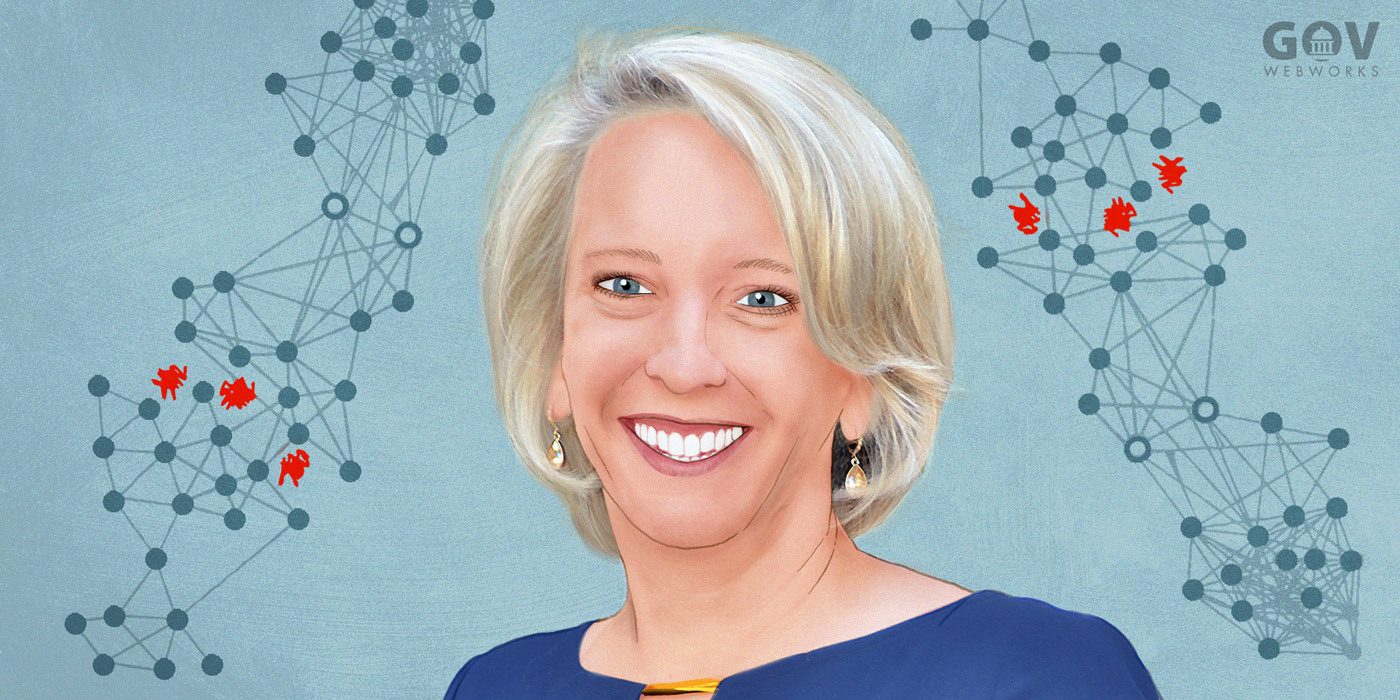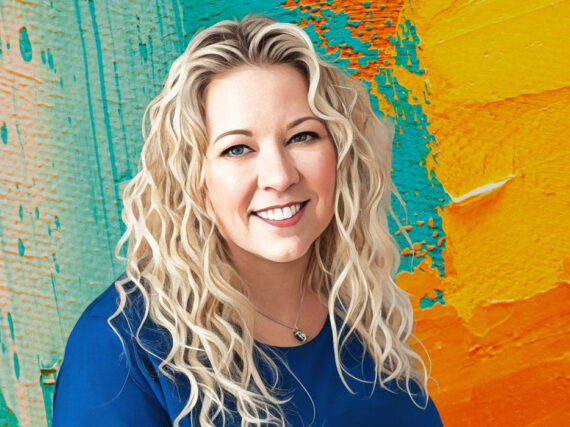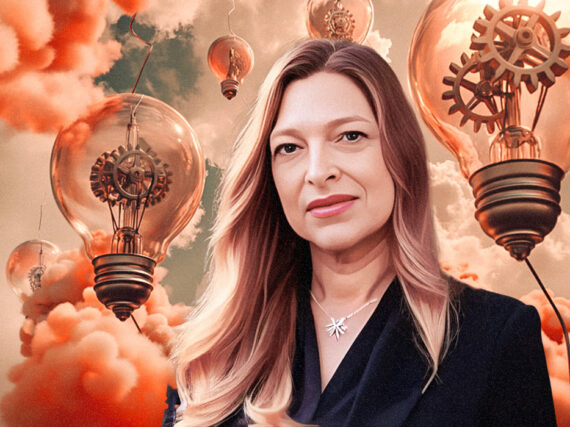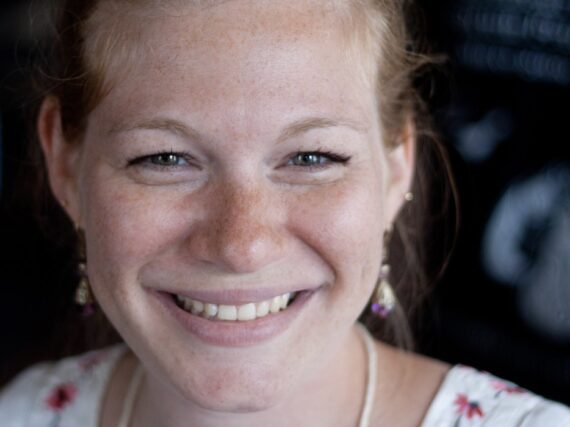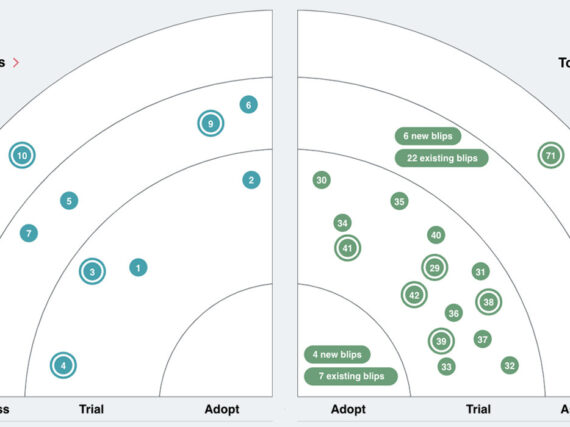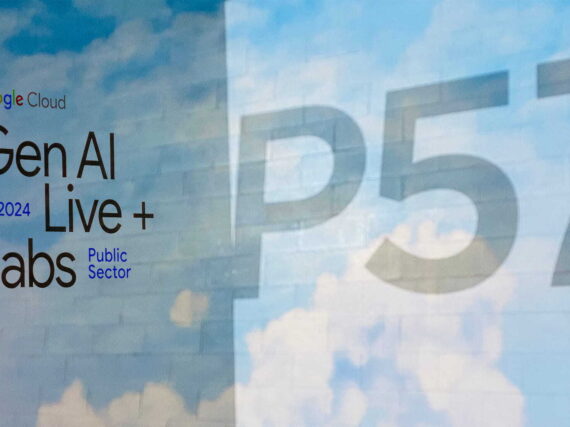Here’s a situation that may sound familiar: There’s a challenge at your organization due to factors beyond your control. Some coworkers propose changes to solve the issue. Others push back, wanting to keep things the same or saying the new ideas can’t be done. These two opposing factions come into conflict, and the situation only seems to get worse. What should leadership do?
“The key is engaging the tension in ways that make it adaptive, which means allowing different ideas, opinions, and perspectives to ‘conflict’ in ways that spark creative solutions and outcomes,” explains Mary Uhl-Bien, BNSF Railway Endowed Professorship in Leadership at Neeley School of Business, and a top scholar on Complexity Leadership Theory. “We call it conflicting, but conflicting can only happen if we combine it with what we call connecting.”
How do we find ways to bridge across differences and work together to move things forward and adapt to change? According to Mary, learning to effectively engage in connecting is “the greatest leadership challenge of our time.”
We spoke with Mary about how leaders can use the science behind Complexity Leadership Theory to help their organizations not only connect and adapt to the complexity of today’s challenges, but thrive and prosper.
You’ve been writing papers and researching complexity and leadership since 2001. When did people really start paying attention?
2020 was a wake up call. Before the pandemic, people could still ignore the research underlying Complexity Leadership (see Leadership for organizational adaptability: A theoretical synthesis and integrative framework). Government, primarily, has been able to get away with continuing the old ways of operating. But what happens in complexity is that when you’re in it, you don’t really have a choice. We saw that in Covid.
In extreme complexity events, it’s literally adapt or die. Complexity events are unpredictable, unanticipated, and dynamic. They create a massive shift very unexpectedly.
Complexity has been happening in business for a long time and they have had to shift to new ways of leading and operating. The biggest wake-up call was after the 2008 global financial crisis, when they realized that business can be affected by anything, anywhere in our increasingly interconnected world.
The reason businesses have changed is because they’ve been disrupted, but government and higher education largely has been able to resist the disruption. This is no longer the case.
Why is the ability to have an adaptive response so important right now?
We just morphed to the Artificial Intelligence era and it’s a massive game changer. We have to rethink everything in the age of AI. We should be using it, but we should be using it the right way. We should also be understanding it in terms of how to defend ourselves from it because it has the potential to be incredibly dangerous. So if we don’t get on board with this and if we don’t adapt, we are going to find ourselves being reactive rather than proactive.
When you’re in a steady state and a complexity event comes in and shifts you into a different state, you must adapt. There is no choice.
Government and education didn’t adapt as much in 2008 because they didn’t have the same threat of adapt-or-die as business did. That’s all changed with Covid and AI. You think you can go into your classroom, do the same things you’ve always done, but your students are not in the same world anymore. Universities tend to go into an order response, but Artificial intelligence is one we’re not going to be able to resist. We’re going to have to figure out what to do about this, because it’s changed everything about the way students learn. We have to change the assignments we give them and our expectations of what they need to know.
How can government and higher ed harness the adaptive networked response?
In the complexity leadership model, you need to have both operational and entrepreneurial elements. All systems need operational, which is about generating efficiency, productivity, and results. I would say, if anything, government needs to strive for more efficiency and more effectiveness, right? But at the same time in an adaptive system, you need to have an entrepreneurial element of learning, innovation, and growth. Some people have less of a growth mindset, but we all know how to learn and grow. We’ve done it our whole lives.
The system can get disrupted on the operational side or the entrepreneurial side, and that opens up adaptive space for change. And this is what Covid did, it opened up a ton of adaptive space. That’s why we saw all this change happen because we had no choice, it was adapt or die.
We need to create the conditions for adaptation to occur. We call these conditions adaptive space. It involves bringing people together with divergent views, bumping the different ideas and perspectives up against each other in conflicting.
You have to act while the adaptive space is open and the system is loosened up for change because once the complexity pressures are gone, things will quickly go into equilibrium around a new normal and return to a more stable steady state.
When adaptive space gets opened, you want to use that space to get in the change that you need to adapt the system. Many know this as the logic underlying the premise, “Never waste a good crisis.”
Operational excellence means the operational system is open to change – willing to accommodate change. “Adaptive” operational systems actively seek out and help adaptations get implemented into the system. The ineffective operational systems are ones that are rigid and won’t change.
How do agencies move out of the inertia to change?
We need to think about leadership differently and understand that the old models truly don’t work. We can’t just rely on the idea that we’re going to drive something through a governance system, and that the governance system is going to work, and we can do it through a top-down approach or committees. It’s not going to happen.
If you’ve got a system that’s in inertia, find your entrepreneurial people, they’re always there. And that’s because people do know how to adapt.
We don’t need to work hard to get people to come up with ideas, everyone has them. Instead, we need to help nurture the good ideas into adaptive solutions. How can we get those ideas advanced into the system to generate a new adaptive order?
The key is using connecting to spark new ideas and ways of doing things that everyone can work on together to enable an adaptive new order for the organizational system.
Can you give an example?
This is what I’m doing as a department chair in higher ed right now. I’ve identified the entrepreneurial people and I’m saying to them, “Go do what you can do, I’m going to support you. I’m going to link up and partner with you, and I have the skills to help get your adaptive solutions into the system.”
I’m finding the elements of my system that are adaptive and enabling them to help us all be more adaptive, and then protecting the adaptive elements from the ones that want to keep the system in an old, outdated order.
Now, the entrepreneurial might be a handful of people out of the entire department. To the rest I’m saying, “The entrepreneurial ones are going to help us. You continue doing your operational role and do it really well. But I will ask you to have an agile mindset in how you engage with the entrepreneurial people and ideas so that you do not automatically shoot new ideas down.” Essentially, I am asking them to set aside their automatic “Bias to Say No” that causes them to be defensive or protective of their old way of doing things when ideas for change come up.
How does conflicting turn into connecting?
People who are entrepreneurial and love ideas and “bashing them around” are likely already good at conflicting and connecting in adaptive space. What frustrates them is when they “hit the brick wall,” that is, when they try to advance their ideas and get shot down. But their ideas are not always the best because they might not have the full picture of the operational issues involved in implementing them. This is why the ideas need to be “conflicted” with those with knowledge of the operational issues so that modifications can be added to make them operable.
Conflicting morphs and changes the idea and the adaptive solutions that result, so everyone has to be open to ongoing adaptation, or emergence, along the way.
People with a “Bias to Say No” automatically want to shut things down, and often feel a sense of power in doing that. And people with ideas often fall in love with their ideas and don’t want to modify them, so they resist suggestions that are made to adapt them. Leaders must play in the space between all of this to help enable the right kind of conflicting – suggestions and ideas that help advance a solution – and then see the areas where connecting can occur that those offering the ideas might not. They often do this by listening carefully and watching for patterns in the conflicting that can spark creative solutions that work across the conflicting. They then enable the others to see the adaptive solution that is arising from the conflicting.
Then what?
Once ideas are “conflicted-and-connected” in ways that lead to adaptive solutions, they must be formalized as a new way of doing things in the operational system.
Most often this needs to be done more broadly than just the local group. So now the conflicting-and-connecting happens again, but on a different level. This step requires enabling leaders who can help work the idea across the system in ways that lead to positive change.
I’m doing this right now with health care leaders in our TCU Center for Executive Education. We bring a group of medical leaders together around a specified complexity challenge they all share. We then engage them in the conflicting-and-connecting process to help them surface an adaptive solution. Before we go any farther in trying to implement the solution, we bring a panel of others into the space to get their perspectives on the solution and what needs to be considered to make it work going forward, e.g., legal issues, IT, finance, HR, hospital operations.
We listen to the challenges presented by the panelists who come in but then ALL work together, with the goal of trying to advance change, to figure out how to get past the challenges to make adaptability happen.
The only reason it works is because the high-level organizational leaders see the value of this approach and they embrace it. They are willing to engage in the adaptive space and invest in developing leaders that can enable it because they see the benefits that come from it firsthand. They recognize that engaging complexity leadership in this way is a win-win for everybody.
What is holding government agencies back from adaptive solutions?
The number one thing is the bureaucratic mindset. Bureaucratic mindset is an old mindset that views power as hierarchical, and people in higher positions as having authority and control. This leads to the “Bias to Say No.” Bureaucratic mindset is not about adaptability, it’s the belief that you can stay stable and the system should stay the same, and that protecting one’s interests is the primary goal. It’s what leads to dysfunction, lack of efficiency, and the organizational “bloat” that is likely what’s frustrating so many people and exacerbating our political problems.
If we replace the bureaucratic mindset with a collaborative and adaptive mindset, we can listen to one another and prioritize and reward positive change that leads to greater operational efficiency and adaptability.
Are you optimistic we will figure this out?
There’s no doubt in my mind we can change the way work is done and the role of government in supporting business and organizations in doing that. We can make people’s lives better and have more leisure time while doing it, and we can do all of that while taking better care of our planet. We just have to channel our energy and our efforts the right way. When I see negative behaviors occurring, I think we’re in a stage and we need to wait, because the pendulum will swing and adaptive forces will push us back in another direction.
Right now we are too heavy on conflicting. My hope is that it will help us to see and embrace the value of connecting.
We need to find the people who value working together again. We need leaders who can use the technologies we have, the incredible intelligence we have, the capabilities we have, and channel it for positive change and adaptation in the world.
Learn more
- Complexity Leadership and Followership: Changed Leadership in a Changed World, by Mary Uhl-Bien, April 26, 2021
- Read highlights from the Agile to agility Conference with Mary Uhl-Bien
- Contact us to learn more about how digital tools help government adapt
